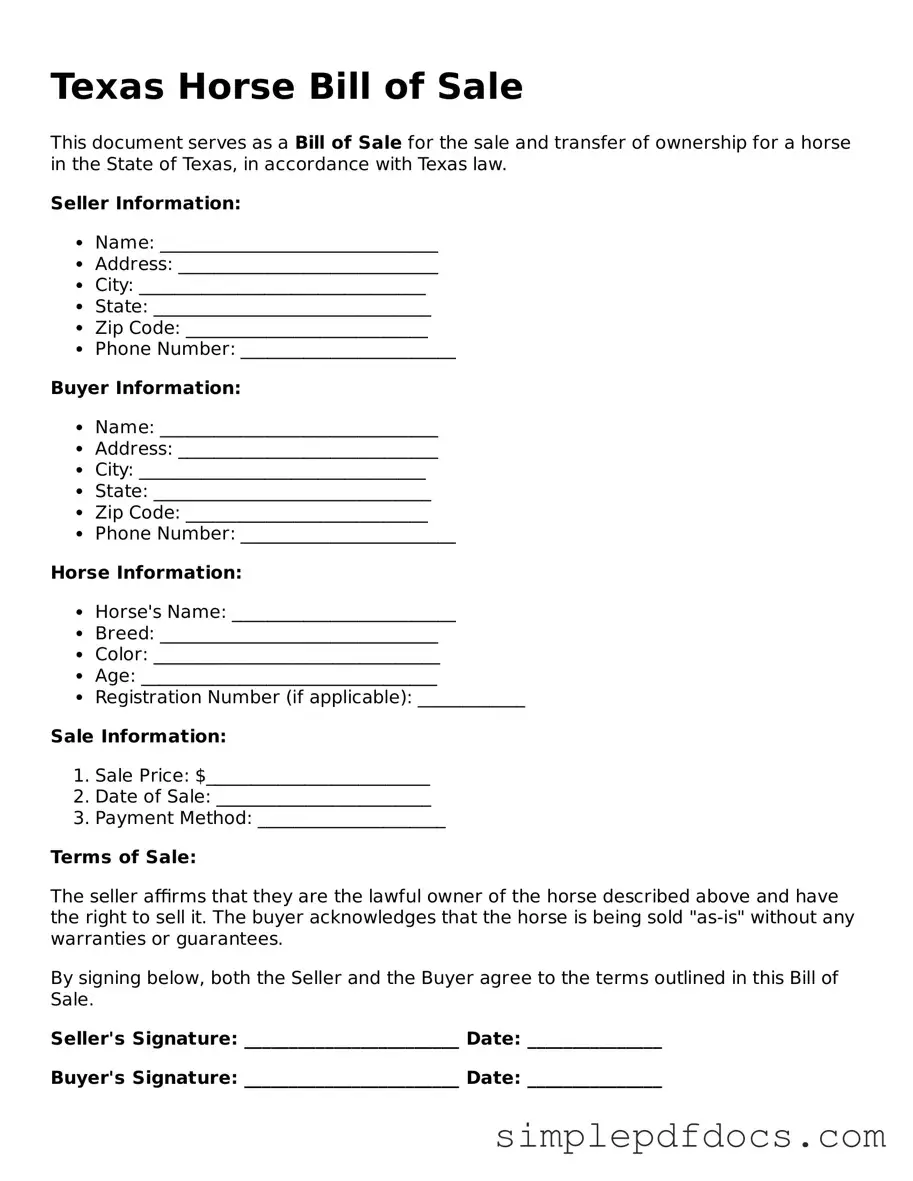The Texas Horse Bill of Sale form serves as a crucial document in the transaction of equine ownership, providing both buyers and sellers with a clear record of the sale. This form not only outlines the details of the horse being sold, including its breed, age, and registration information, but also specifies the terms of the sale, such as the purchase price and any warranties or guarantees offered by the seller. Additionally, it typically includes spaces for both parties to provide their contact information, ensuring that there is a mutual understanding of the transaction. By documenting the sale, this form helps protect the rights of both the buyer and the seller, offering a layer of legal protection should any disputes arise in the future. Furthermore, the Texas Horse Bill of Sale can serve as proof of ownership, which is essential for registration purposes and for ensuring that the horse is free from any liens or encumbrances. Overall, this form plays an integral role in the smooth transfer of ownership, fostering transparency and trust in the equine marketplace.
